Scientist of the Day - Aleš Hrdlickǎ
Aleš Hrdlickǎ, a Bohemian physician and anthropologist, was born Mar. 29, 1869, in Humpolec in what is now the Czech Republic. Hrdlickǎ came with his family to the United States when he was a young teen and decided to study medicine. In the 1890s, he found his interests turning to the application of the study of human anatomy to anthropology, and in 1903, he was appointed the first curator of physical anthropology at the United States National Museum, part of the Smithsonian Institution. His boss was William Henry Holmes, a geologist turned archaeologist and anthropologist, who was also director of the U.S. Bureau of American Ethnology.
By 1903, European anthropologists had found numerous physical specimens of humans or human ancestors who had lived in the Pleistocene, the epoch of mammoths and cave bears that we now know extended from 2 million to about 13,000 years ago. Some of those looked like modern humans, and some were more primitive-looking, such as the Neanderthals, of which half-a-dozen skeletons had been found, and many of their Mousterian tools.
In the Americas, the physical record of early humans was not nearly so rich. There were no Neanderthals and no Neanderthal-like tools. But the time when Hrdlickǎ converted to anthropology coincided with a period in the United States when many American archaeologists were making the case for an "American Paleolithic," trying to show that humans in America were just as old as those of Europe, and that we had equivalents to the Neanderthals and Mousterian tools of Germany and France. A skull was found in Trenton, New Jersey, in 1879, and a femur in 1899; it was certified as a Pleistocene specimen by Frederick Putnam at Harvard. A human skeleton, known as the Osprey skeleton, was dug up in west Florida in 1888, from what was claimed to be a Pleistocene formation. The “Loess man” or “Gilder Mound man” was dug up near Omaha, Nebraska in 1894, while in 1902, in Lansing, Kansas, a family digging a cellar for their root vegetables unearthed a human skeleton. It too was said to be “below the loess,” meaning below the earth left behind by the retreat of the last glaciers at the end of the Pleistocene.
As each new skeleton was unearthed and proclaimed to be truly ancient, reports were sent to the Smithsonian, where Hrdlickǎ stood as guardian of the Paleolithic wicket and knocked every new offering out of the playing field. He maintained that the skeletons of all these supposed ancient Americans were indistinguishable from those of living American Indians, and they in turn were almost identical to those of Asians, suggesting to Hrdlickǎ that native Americans were recent immigrants from Asia, and that this continent was devoid of human occupation during the age of Neanderthal in Europe. Hrdlickǎ went on policing the Paleolithic for 30 years, with the full support of Holmes, and he refused to entertain the validity of any native American remains or artifacts older than the late Pleistocene, which is to say, earlier than about 13,000 years. It is not surprising that scores of American archaeologists were furious with Hrdlickǎ and saw his constant interference and obstinacy as intolerable. That said, we now know that Hrdlickǎ was right in every single case he reviewed and rejected. Informed naysayers often have an important role to fill in scientific controversy. Only when a projectile point was found embedded in a bison bone in Folsom, New Mexico, in 1927, did Hrdlickǎ keep silent, and wisely so, as the Folsom site was indeed the first certain evidence that humans in the New World had occupied the same hunting grounds as mastodons, mammoths, and extinct bison.
We have several publications bv Hrdlickǎ in our library. His Skeletal Remains Suggesting or Attributed to Early Man in North America (1907) was the first to take on Lansing man and Loess man and their ilk and argue that there was no evidence that any of them were of Pleistocene age. The book, a slim volume of 113 pages, had illustrations of each specimen, several of which we show in this post (first and fourth images).
After Piltdown man was found in 1912, Hrdlickǎ published The Most Ancient Skeletal Remains of Man (1914), which widened the scope of his inquiries to include European and Asian finds such as Java man, Piltdown man, and the more recent Neanderthals. This was originally published as part of the Smithsonian Report for 1913; in 1916, it was separately reprinted as a second edition. This also is a spare treatise, 63 pages long. We have both versions, and show you the title page of the separate printing (fifth image).
Finally, in 1930, Hrdlickǎ published a massive reference work, The Skeletal Remains of Early Man, 370 pages long, which discussed and illustrated every fossil hominid known at the time, including the recently found Rhodesian Man, and even the skullcap of Peking man, announced as the book was going to press in 1929 and included as an addendum (seventh image). Filled with photographs, diagrams, tables, and charts, The Skeletal Remains of Early Man was a unique achievement – there really was nothing else like it available anywhere.
At the time Hrdlickǎ wrote, one hominid specimen had been found in South Africa – the Taung skull, discovered by Raymond Dart in 1924. The case for the African origin of Homo sapiens had yet to be made, but Hrdlickǎ would have rejected it, as he was convinced humankind arose in central Europe, the home of the Neanderthals. In this conviction, he turned out to be wrong.
Hrdlickǎ has come in for some flack in recent years, because he welcomed into the Smithsonian Institution the skulls and other remains of native American ancestors. This disparagement by hindsight is somewhat unfair, since that is what every physical anthropologist did in the early 20th century – looked for early human remains, retrieved them, and took them to a museum for study. The fact that this is no longer considered acceptable anthropological practice should not really be used to tarnish the reputations of such as Hrdlickǎ, who worked in a time when no one raised any such objections.
William B. Ashworth, Jr., Consultant for the History of Science, Linda Hall Library and Associate Professor emeritus, Department of History, University of Missouri-Kansas City. Comments or corrections are welcome; please direct to ashworthw@umkc.edu.

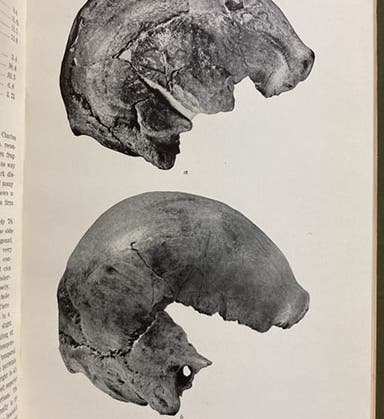

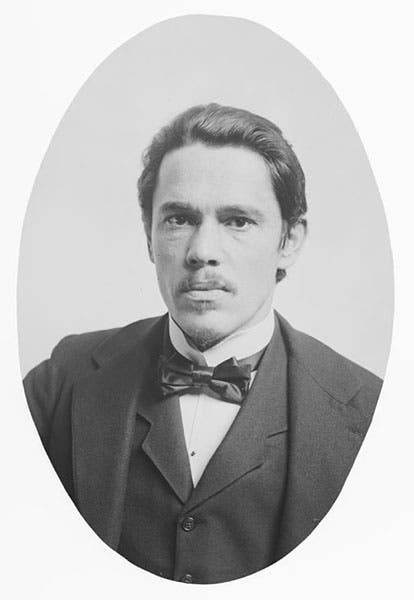

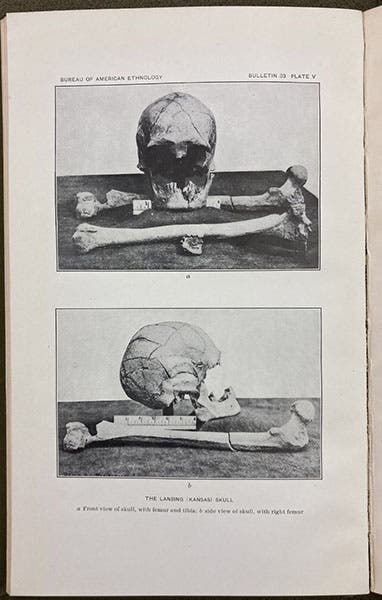
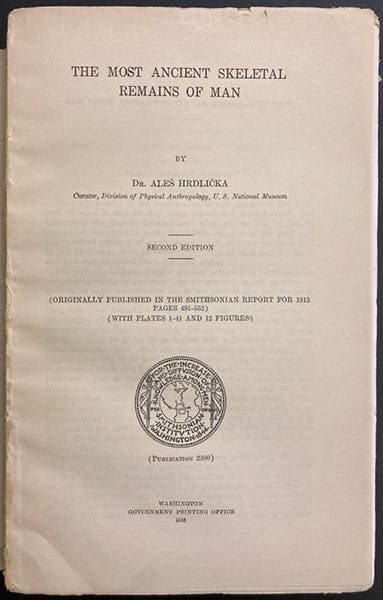


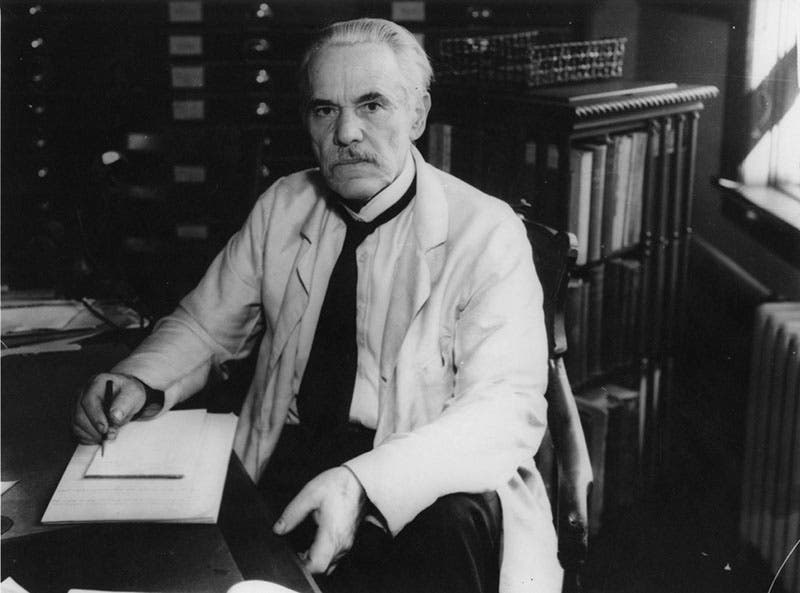


![Using an astrolabe to measure the depth of a well, woodcut in Elucidatio fabricae vsusq[ue] astrolabii, by Johannes Stöffler, 1513 (Linda Hall Library)](https://assets-us-01.kc-usercontent.com:443/9dd25524-761a-000d-d79f-86a5086d4774/a998eb50-55d2-4a88-ace2-a50aa5fa86e7/Stoffler%201.jpg?w=210&h=210&auto=format&fit=crop)

